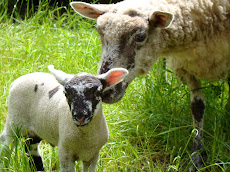What is lasagna gardening you may ask. It's layering of different materials to create a weed barrier and great soil for a new garden (or row in your existing garden or new raised bed). It can be done over any landscaped surface - lawns, weedy areas, bark dust, gravel. I used the technique to expand our existing in-ground garden by 6 feet so that I could add two more rows of strawberries. Since our garden is huge, it took a lot of materials. Personally, while it worked well for us, I think this technique is best for smaller raised beds.
Materials:

- cardboard, news paper or all-natural fiber cloth
- sticks, pine cones, straw or dry leaves
- compost
- optional, soil
Steps:
- Pick your location. For most garden plants you want at least 8 hours of direct sun, so that's the primary consideration. But also think about access - can you get to and walk around the space easily. And don't forget a water source because you don't want to be lugging water a long ways.
- Lay down the cardboard over the space you want to garden. This is your weed barrier. If you are building a new raised bed, lay down the cardboard first and then build the sides of the bed over the top. Make sure to over lap the cardboard a little so there aren't spaces for weeds/grass to come up through it. If you are using news paper, make sure it's 5 sheets thick or more. You want it to take at least two seasons for the newspaper to decompose, that time is important to make sure the weeds and grass die out. An all-natural fiber cloth, like linen, burlap or even jeans, works really well too. It can't contain any synthetic materials because those won't decompose over time.
- Next add about 4 inches worth of brown structure like twigs, pine cones, straw or dry leaves over the cardboard. Don't tamp it down. This layer is creates drainage under the compost and soil. Most garden plants like to be damp but not sitting in puddles of water.
- Add 6 inches of compost. We compost all our kitchen scraps along with animal (sheep and chicken) waste on site, so we have a lot, I mean A LOT, of compost for the garden. I added it very fresh. In other words there were still banana peels visible. Since I did this in the fall and let it rest all winter, I knew it would be composted by spring. If you don't have a source of your own compost, go get some from your local nursery.
- If you are creating a new garden in the spring, you'll probably want to plant right away or at least in a few weeks. I would recommend buying a compost/soil mix from the nursery. They can help you decide how much compost-to-soil is best. You want a minimum of 6 inches of material to plant in; more like 8 inches if you are planting root veggies like carrots.
That's it. No tilling, just let it sit. My fresh compost sat all winter and in the spring I transferred strawberry runners into two new rows. We had a great harvest last year. This spring the plants are looking good and the weeds are still absent. Hopefully we'll get a bumper crop again :-)














No comments:
Post a Comment